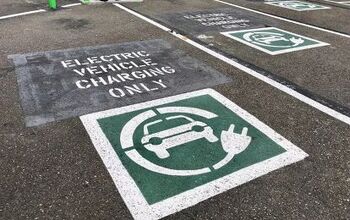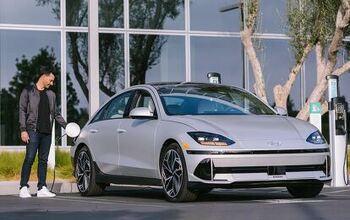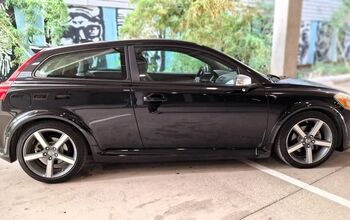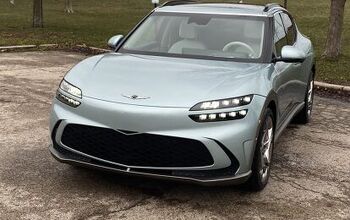U.S. Seeking a Trade Deficit Reduction in Early NAFTA Talks and Not Much Else

Despite President Trump having initially framed his proposed NAFTA renegotiations as a hardline “America First” endeavor, the administration’s stance has soften significantly. In a recent summary of objectives, U.S. Trade Representative Robert Lighthizer highlighted fairness as the key issue throughout.
Absent were any mention of abandoning the deal if certain conditions were not met and the steep tariffs previously alluded to by the president. In fact, any mention of tariffs specifically targeted their reduction or elimination — for both imported and exported goods. There are, however, numerous examples that reaffirm the Trump administration’s earlier objectives and a handful of inclusions that should please domestic automakers.
The biggest of these is a streamlining of the regulatory practices between participating countries, something manufacturers have wanted for quite some time. While the White House has pressed for deregulation in the United States, automakers have more to gain though uniform regulatory practices between countries. One of the first items in the summary states the importance of promoting “greater regulatory compatibility with respect to key goods sectors to reduce burdens associated with unnecessary differences in regulation, including through regulatory cooperation where appropriate.”
With the automotive industry existing as one of the most heavily regulated industrial businesses on the planet, it isn’t difficult to surmise who Lighthizer is targeting.
Matt Blunt, president of the American Automotive Policy Council, a group representing U.S. automakers, told Reuters the regulatory streamlining would be a boon to automakers. He also said the summary’s focus on eliminating currency manipulation was a worthwhile endeavor.
A statement from Ford Motor Company echoed Blunt’s assertion: “Foreign currency manipulation is the 21st century trade barrier, and we strongly support the inclusion of this top-tier issue in the U.S. negotiating objectives for NAFTA.”
However, currency manipulation hasn’t been much of an issue between the North American partners — indicating that the NAFTA renegotiation is an attempt at being proactive, or will serve as a framework for whatever replaces the Trans Pacific Partnership Agreement.
Also included in the summary are numerous references to bringing labor provisions into the center of the agreement, in the hope that member countries legally adopt standards as recognized in the ILO Declaration. That includes the abolishment of all child labor and the right to organize without fear of repercussion. It also discusses holding participating countries accountable for providing fair minimum wages and worker safety without being explicit as to those guidelines.
While that’s all well and good, it does little to establish clear-cut boundaries or provide the sweeping changes that were initially promised. It does hint at minimizing the country’s trade deficit with Mexico — a double-edged sword, as it technically results in the U.S. having access to exceptionally affordable goods — but there’s nothing mirroring the president’s earlier tough talk.
On Monday, Trump promised to bolster U.S. manufacturing by reducing the $64 billion trade deficit with Mexico while showcasing products made in all 50 states. “No longer are we going to allow other countries to break the rules, to steal our jobs and drain our wealth,” Trump said from the White House’s South Lawn.
However, the summary makes very few strict demands — opting instead to “promote” fairness or “improve” industrial trade disparities. Depending on your politics, it may not have needed to either. But there is a clear distinction between the presidents stern rhetoric and what Lighthizer will be asking for.
If you’re interested, the full document is available on Office of the United States Trade Representative’s website for perusal.

A staunch consumer advocate tracking industry trends and regulation. Before joining TTAC, Matt spent a decade working for marketing and research firms based in NYC. Clients included several of the world’s largest automakers, global tire brands, and aftermarket part suppliers. Dissatisfied with the corporate world and resentful of having to wear suits everyday, he pivoted to writing about cars. Since then, that man has become an ardent supporter of the right-to-repair movement, been interviewed on the auto industry by national radio broadcasts, driven more rental cars than anyone ever should, participated in amateur rallying events, and received the requisite minimum training as sanctioned by the SCCA. Handy with a wrench, Matt grew up surrounded by Detroit auto workers and managed to get a pizza delivery job before he was legally eligible. He later found himself driving box trucks through Manhattan, guaranteeing future sympathy for actual truckers. He continues to conduct research pertaining to the automotive sector as an independent contractor and has since moved back to his native Michigan, closer to where the cars are born. A contrarian, Matt claims to prefer understeer — stating that front and all-wheel drive vehicles cater best to his driving style.
More by Matt Posky
Latest Car Reviews
Read moreLatest Product Reviews
Read moreRecent Comments
- Tassos Jong-iL This would still be a very nice car in North Korea.
- Jeff One less option will be available for an affordable midsize sedan. Not much can be done about GM discontinuing the Malibu. GM, Ford, and Stellantis have been discontinuing cars for the most part to focus on pickups, crossovers, and suvs. Many buyers that don't want trucks or truck like vehicles have moved onto Japanese and South Korean brands. Meanwhile large pickups and suvs continue to pile up on dealer lots with some dealers still adding market adjustments to the stickers. Even Toyota dealers have growing inventories of Tundras and Tacomas.
- Lorenzo This car would have sold better if there was a kit to put fiberglass toast slices on the roof.
- Lorenzo The Malibu is close to what the 1955 Bel Air was, but 6 inches shorter in height, and 3 inches shorter in wheelbase, the former making it much more difficult to get into or out of. Grandma has to sit in front (groan) and she'll still have trouble getting in and out.The '55s had long options lists, but didn't include a 91 cubic inch four with a turbo, or a continuously variable transmission. Metal and decent fabric were replaced by cheap plastic too. The 1955 price was $1765 base, or $20,600 adjusted for inflation, but could be optioned up to $3,000 +/-, or $36,000, so in the same ballpark.The fuel economy, handling, and reliability are improved, but that's about it. Other than the fact that it means one fewer sedan available, there's no reason to be sorry it's being discontinued. Put the 1955 body on it and it'll sell like hotcakes, though.
- Calrson Fan We are already seeing multiple manufacturers steering away from EVs to Hybrids & PHEVs. Suspect the market will follow. Battery tech isn't anywhere close to where it needs to be for EV's to replace ICE's. Neither is the electrical grid or charging infrastructure. PHEV's still have the drawback that if you can't charge at home your not a potential customer. I've heard stories of people with Volts that never charge them but that's a unique kind of stupidity. If you can't or don't want to charge your PHEV then just get a hybrid.


































Comments
Join the conversation
Yet another Trump lie.
H. Ross Perot called this one correctly. The Dems sold out their base with this one, which is why they listen to Donald, even though he could not care less like any real con man. The Union, democratic strongholds, main street USA, was gutted. I drive around all day in upstate NY, looking at small towns that used to have a factory and downtown, now they have a dollar store and rehab clinic. I wish I were exaggerating. My young adult world was way more fair overall than today....now get off my lawn !!!!